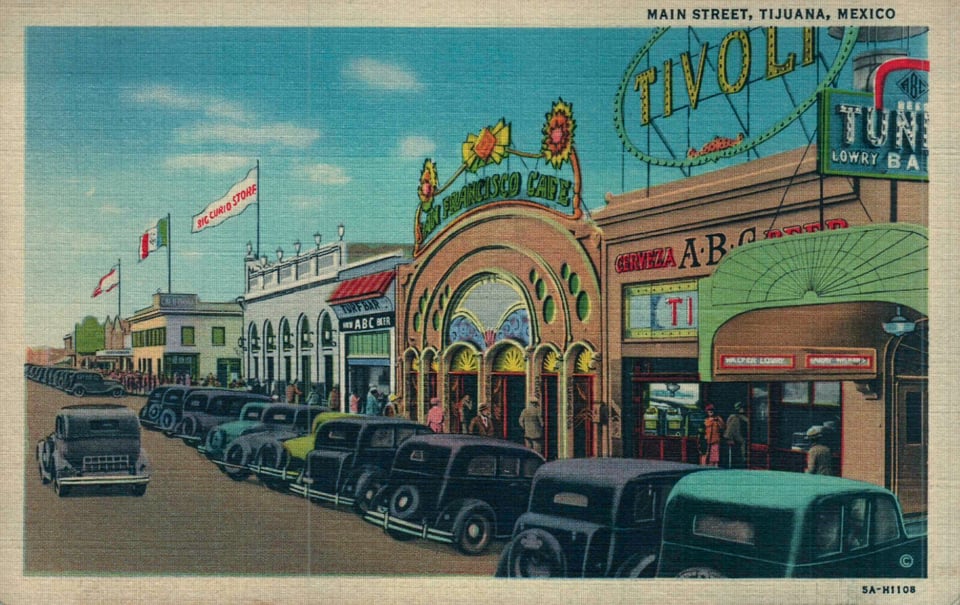Margaritas

At a wedding a few years ago, I noticed a historical note on the bar menu for margarita / tequila daisy. “The first mention of the drink was in 1936 in an Iowa newspaper article by James Graham, who found the drink in Tijuana.”
The firm superlative and incongruity of geographies earned this a “photo and a file away” for me. I dived into the archival records this month.
The date was inaccurate as quickly as I suspected. “Tequila Daises” was offered as a possible name for the new minor league baseball team in El Paso, Texas, in 1930. The American city was a decade into Prohibition and a decade into its status as a gateway community for Juarez, Mexico. In early 1933, a reporter referencing the drink noted that Juarez required a commute of no more than three minutes walking. With the 21st Amendment enacted at the end of the year, the drink publicly migrated north.
A prominent local resident was spotted “learning the recipe for a ‘tequila daisy’” a few weeks later in Santa Barbara, California, and as 1934 pushed onward, the party in Mexico fizzled. Turf Bar advertised itself in southern California newspapers as “Home of and Originators of the Famous Tequila Daisy” by 1935 to lure customers back to Tijuana. And finally, the following year, the intrepid Iowa editor visited. His bus driver noted that Prohibition had kept 150 bars in business. Nine remained, and Graham asked the bartender at Turf Bar about the drink’s origins.
No contemporaneous recipe has yet been found in any available archival resources, which is important because the Daisy was an American drink initially made with brandy and orange liqueur. That evolved into a newer version made with gin and grenadine. Turf Bar’s concoction, swapping tequila for the primary liquor, didn’t specify the second ingredient. If it was an orange liqueur, like triple sec, they were serving margaritas. Almost.
An important element we associate with a proper margarita (“daisy” in Spanish) was still missing.
After MUCH reading this month, two stories converge on 1939. A recipe was published by a bartender in New York City that year — complete with salt-rimmed glass! — and a famous Los Angeles bartender later claimed a similar origin. That was revealed in 1955, when his tequila distributor stopped by because the delivery volume had noticeably increased. By 1956, that same distributor released a national advertising campaign with Jose Cuervo (the brand) that included a margarita recipe.
This is all possible because Jose Cuervo (the human!) navigated revolutionaries and competitors. Ted Genoways spent a decade at the intersection of tequila and archives for his latest book, Tequila Wars.
“You can tell the whole history of the industry through this one family because it starts with them,” Ted told me. But no book had been written about a critical period.
“One of the outcomes of the Mexican Revolution and the years that followed: everyone became cautious about what they put to paper. Jose Cuervo himself ends up standing trial as an enemy of the state based on two letters.”
Significant government archives were burned, in whole or in part. Yet like the agave plants in the desert outside, quiet and sturdy, private archives protected many secrets. To gain access, Ted used a classic technique of journalism. “I kept showing up, and I kept showing that I was well-intentioned.”
Ted assembled a master timeline to plot everything he had found in various archives, which allowed him to demonstrate to skeptical families that he would add context and expertise to their collections, not simply extract what he needed. And his process also allowed him to identify connections in materials across the years, to notice later significance in what otherwise seemed unimportant at the time of discovery.
“That’s the magic of the archives.”
Cheers to that and being drunk, “on wine, on poetry or on virtue as you wish.”
FN1...The NYC bar called it a Tequila Sour in 1939. Giving it another name might indicate that the typical Tequila Daisy was then understood to contain grenadine.
FN2...Frozen margaritas followed the cocktail version almost immediately but truly arrived via Dallas, Texas, in 1971. As friend and newsletter reader Dan R. likes to remind me, the Smithsonian has that original machine in its archival collection.
FN3...Sadly, no margaritas of any temperature were consumed while researching, writing, and editing this newsletter.
—
This newsletter was written on the traditional lands of the Piscataway and Nacotchtank.